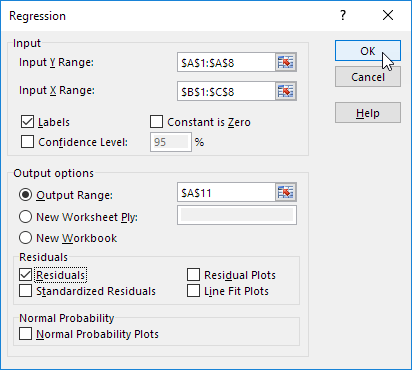
It is important to note that in the event that there are more variables x, the number of columns may vary according to their number, but there will always be 5 rows. Since we have only one variable x, it is necessary to select a range consisting of two columns and five rows. For example, on the A1:B6 range, we will build a table with the ratio of y and x corresponding to the amount of money earned by the student for a period of 5 months. Now, using the example of solving the second task, let's analyze the need for displaying not only the slope and segment, but also additional statistics. The result of applying the function becomes: Enter the formula using Ctrl + Shift + Enter.Then enter the known values of x - the number of hours students spent preparing for the tests (range A2:A12).Enter the known values of y - points that students earned on the last test (cell range B2:B12).

Select the range D2:E2, since LINEST returns an array of two values horizontally but not vertically.To solve the first problem - the ratio of student preparation hours for a test and test results, like x and y, respectively - the following procedure should be applied (due to LINEST being a function that returns an array): is a logical value that indicates whether additional regression statistics are required.If in the LINEST function the constant argument is FALSE, then b is set equal to 0 and the values of m are chosen so that the ratio y = mx is satisfied. is a logical value that indicates whether the constant b is required to be 0.If this argument is omitted, then it is assumed that this is an array of the same size as known_y. Knowns_y’s is the set of values of y, which are already known for the relation y = mx + b.


To work with the function, you must fill in at least 1 required and, if necessary, 3 optional arguments: The general syntax of the LINEST function call is as follows: The function returns an array that describes the resulting straight line. LINEST function calculates statistics for a series using the least squares method, calculating a straight line that best approximates the available data. Meaning of the output statistical information functions LINEST


 0 kommentar(er)
0 kommentar(er)
